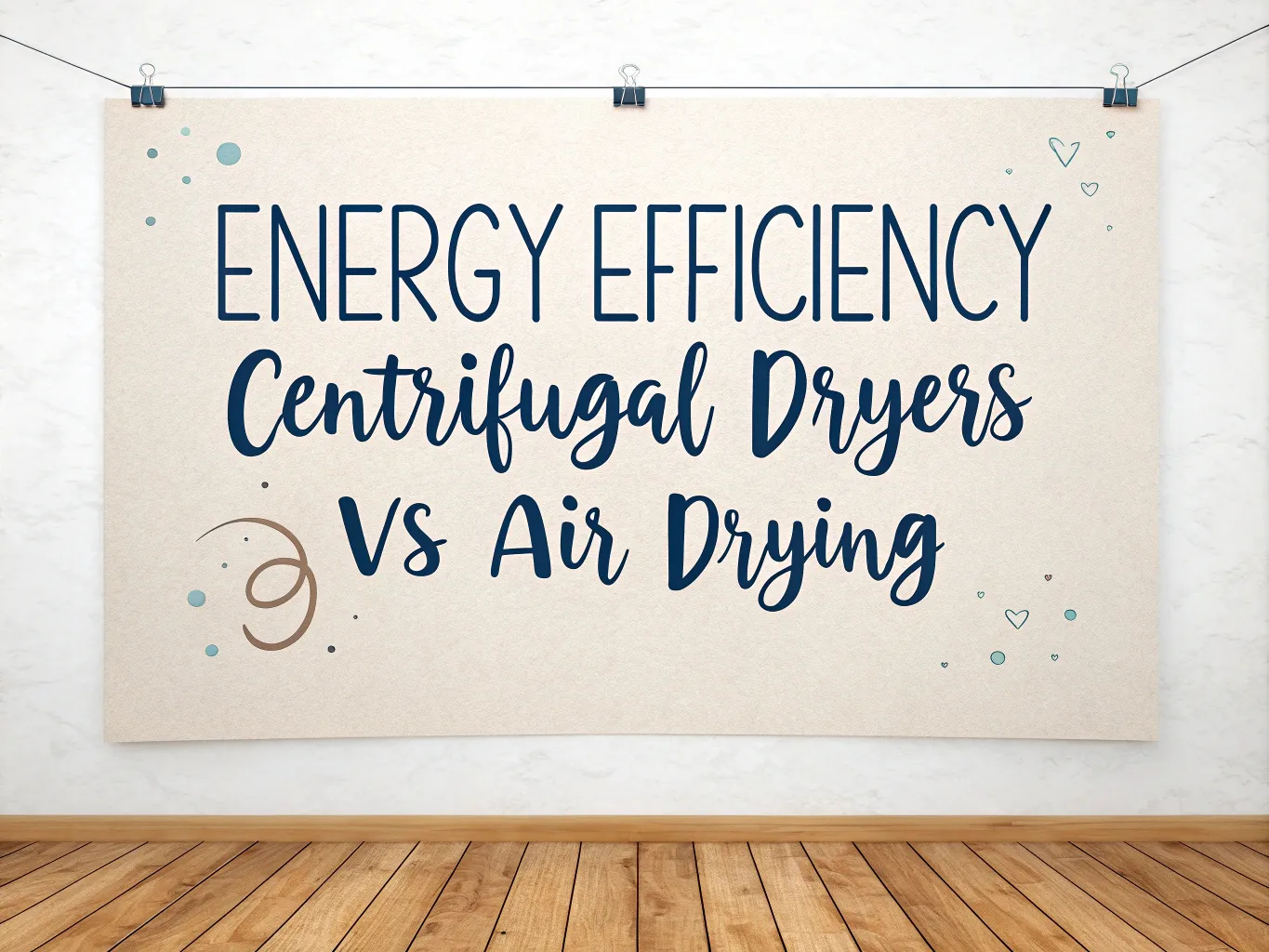When considering drying technologies for industrial applications, understanding the energy input of mechanical centrifugal dryers versus air drying is crucial for optimizing efficiency and cost-effectiveness. This comparison highlights the different energy demands and operational benefits of each method, providing insight into which solution best suits specific needs.
What is a Mechanical Centrifugal Dryer?
A mechanical центрифугална сушара uses high-speed rotation to remove moisture from materials. It operates by spinning the material in a drum, using centrifugal force to expel water or other liquids. The dryer is commonly used in applications where high volumes of water need to be removed quickly, such as in the textile or food industries.
What is Air Drying?
Air drying, in contrast, relies on the ambient air to remove moisture. This process may involve forced airflow through the material, using heat or ventilation to speed up evaporation. Air drying is commonly used in settings where moisture removal is less critical or for materials that do not require rapid drying.
Energy Input: Mechanical Centrifugal Dryers
The energy input for a mechanical centrifugal dryer is primarily driven by the motor powering the spinning mechanism. The dryer typically requires significant electrical energy to achieve high rotational speeds, creating centrifugal force. This energy is efficient in removing moisture quickly, especially in high-load operations. The use of electric motors is well-established, but the efficiency of the process depends on the dryer’s design, including the size of the drum, the speed of rotation, and the type of material being dried.
In terms of energy consumption, mechanical centrifugal dryers can be more energy-intensive than other drying methods. However, they offer a faster drying time, which can improve overall productivity and reduce the need for additional drying steps.
Energy Input: Air Drying
Air drying requires less energy input in terms of electricity, as it mainly uses heat or airflow to promote evaporation. It can be passive or active, depending on the application. In passive air drying, the material is simply left to dry in open air, relying on ambient conditions. In active air drying, forced air or heated air accelerates the evaporation process, requiring energy to power blowers, fans, or heaters.
Although air drying uses less electricity compared to mechanical centrifugal dryers, it often takes longer to remove moisture. This extended drying period can offset its lower energy use, particularly in operations where drying time is critical. However, air drying does not require as much maintenance, and the equipment is generally simpler, which can lower overall operational costs.
Comparing Energy Efficiency
- Потрошња енергије: Mechanical centrifugal dryers consume more electricity due to the high-speed motor used to generate centrifugal force. In contrast, air drying requires less electrical energy, focusing more on thermal energy or air movement.
- Drying Time: Mechanical centrifugal dryers dry materials much faster, making them more energy-efficient in high-volume operations where speed is crucial. Air drying, however, typically takes longer, which can increase the total energy input over time if used for large quantities of material.
- Energy Recovery: Mechanical centrifugal dryers are often equipped with energy recovery systems to reduce electrical consumption by reusing some of the heat or mechanical energy. This can improve energy efficiency, especially in high-demand industries.
- Operating Costs: While mechanical centrifugal dryers generally incur higher energy costs, they often lead to lower labor and time costs due to faster drying. Air drying, on the other hand, may have lower energy costs but can increase labor costs due to longer drying times and potential downtime.
When to Use Each Method
Mechanical Centrifugal Dryers are ideal for applications requiring quick, high-efficiency drying. They are well-suited for industries like food processing, textiles, and pharmaceuticals, where rapid moisture removal is critical, and where energy consumption can be offset by the increased throughput.
Air Drying is better for situations where drying time is less urgent, and energy consumption is a primary concern. It is a suitable option for drying materials that do not require high-speed drying or in facilities where energy conservation is a key priority. Additionally, air drying is often used in less intensive operations, such as drying agricultural products or wood.
Закључак
In summary, mechanical centrifugal dryers are more energy-intensive but provide faster and more efficient drying, making them ideal for high-volume operations. Air drying, while using less energy, is slower and may not meet the needs of industries that require fast, consistent drying. Choosing the right drying method depends on your specific energy, time, and throughput requirements. By understanding the energy input of each system, businesses can make informed decisions that balance cost, speed, and energy efficiency.
For more detailed information on industrial drying methods and energy efficiency, visit our guide on optimizing industrial processes or check out our article on sustainable drying solutions.



